Youth Care Treatment Center and school has helped teens with self-harm all over the United States for 30 years. Our unique approach is based off of solid morals and beliefs to help adolescents be successful in turning their lives around.
Understanding Self Harm
Learn about self-harm
The term self-harm includes a variety of behaviors that involve the intentional infliction of pain onto oneself. Actions taken by people who engage in self-harm may include burning, cutting, punching, or biting oneself, as well as pulling out hair or banging one’s head on a hard object. Though less common, some individuals may even intentionally break their own bones or drink toxic substances such as detergent or bleach.
There is a common conception that those who self-harm are looking to end their own lives; however, this is often not true. The large majority of those who self-harm do it as a method of coping with the emotional upset that is so overwhelming that they feel as though there is no better way to cope with it. By causing themselves to experience physical pain, these individuals begin feeling a sense of control over the psychological pain with which they had been suffering, which provides them with a sense of control.
Others will self-harm to keep themselves tied to reality. For instance, those who battle with dissociative episodes or depersonalization will utilize self-harm as a means of making themselves reconnect with the world around them. The physical pain offers them something tangible to focus on.
No matter the reasons why individuals start self-harming themselves, these are behaviors that require immediate and appropriate medical attention because even if the individual do not begin these behaviors with the intent of suicide, the line between self-harm and actual suicide is very thin and can be crossed unintentionally.
Statistics
Self-harm statistics
The actual act of self-harm is something that is most often done behind closed doors, which makes it challenging to obtain accurate statistics to show the true prevalence of this mental health condition. However, studies suggest that nearly 10% of teenagers between ages 12 and 19 have experimented with self-mutilation, and that about 0.5% of girls ages 13 to 19 participate in these behaviors regularly.
Causes and Risk Factors
Causes and risk factors for self-harm
Experts in the field agree that a number of factors can cause a person to begin harming him or herself. These factors can include genetics, physicality, and environmental factors, and can be described below:
Genetics: Self-harm is most commonly symptomatic with the presence of a mental health condition, and these forms of disorders are known to share genetic ties. For instance, disorders including bipolar disorder, depressive disorders, and anxiety disorders are known to run in families and can lead to the development of self-harming behaviors. As a result, those with family members who battle with these mental health conditions are more likely to develop these behaviors that those who do not.
Physical: Neurotransmitters in the brain that are responsible for regulating emotions can be imbalanced, causing an individual to become more likely to develop a mental health condition, which can bring about self-harming behaviors.
Environmental: The environment that children and adolescents live in can impact their likelihood of self-harm tremendously. Those who grow up in violent homes might self-harm to feel a sense of control over themselves. In addition, those who have been victims of abuse might also self-harm to numb themselves to the emotional pain they are feeling.
Risk Factors:
- Lacking strong, healthy interpersonal relationships
- Experiencing the death or loss of a loved one
- Having friends or family members who self-harm
- Lacking appropriate coping skills
- Experiencing trauma
- Personal history of depression or other mental illness
- Family history of mental illness
- Lacking the ability to regulate one’s emotions
- Being female
- Being in the age group of adolescents, teens, and young adults
Signs and Symptoms
Signs and symptoms of self-harm
The signs and symptoms that one might display when self-harming can vary from individual to individual. Since the majority of individuals self-injure in private, signs might not be as obvious. However, the are some common warning signs that can signify if an individual is self-harming, including:
Behavioral symptoms:
- Isolating oneself from family and friends / spending significant amounts of time alone
- When confronted with the presence of noticeable injuries, brushing them off as being “accidents”
- No longer participating in activities that were once highly enjoyed
- Wearing long-sleeved shirts or long pants, even when the weather is hot
Physical symptoms:
- Presence of scars
- Frequent scrapes or cuts
- Patches of missing hair
- Frequent bruises
- Frequent, unexplained broken bones
Cognitive symptoms:
- Dissociating
- Having difficulty controlling impulses
- Chronic, uncontrollable thoughts of wanting to self-harm
- Ruminating thoughts about one’s personal identity
- Having extreme difficulty concentrating and focusing
Psychosocial symptoms:
- Feeling guilty and ashamed
- Feelings of hopelessness
- Feelings of helplessness
- Emotional numbing
- Emotional instability
- Feelings of worthlessness
- Ever-increasing feelings of anxiety, especially when unable to self-harm
- Feeling disgusted by oneself
Effects
Effects of self-harm
When an individual is engaging in self-harming behaviors and does not obtain treatment to address the hidden causes behind the behaviors, the lasting effects can be dangerous. Some of these effects can include:
- Academic failure
- Consistent and intrusive thoughts about the behavior itself
- Complete isolation from family and friends
- Increased feelings of shame, disgust, and guilt
- Increased frequency of the self-injurious behaviors
- Developing an addiction to drugs and/or alcohol
- Familial discord
- Accidental death
In addition, depending on the way in which one self-harms, there can be long-term effects, including:
- Improper healing of broken bones
- Multi-organ failure
- Permanent scarring
- Permanent tissue damage
- Damage to organs
- Permanent numbness in certain parts of the body
- Permanent weakness in certain parts of the body
- Infected wounds
- Severe bleeding
- Anemia
Co-Occurring Disorders
Self-harm and co-occurring disorders
It is common for those who battle with self-harming behaviors to also grapple with additional mental illnesses. The disorders most often linked to self-harm can include:
- Schizophrenia
- Substance abuse disorders
- Eating disorders
- Depressive disorders
- Bipolar disorder
- Panic disorder
- Other anxiety disorders
- Obsessive-compulsive disorder
- Posttraumatic stress disorder
- Borderline personality disorder








